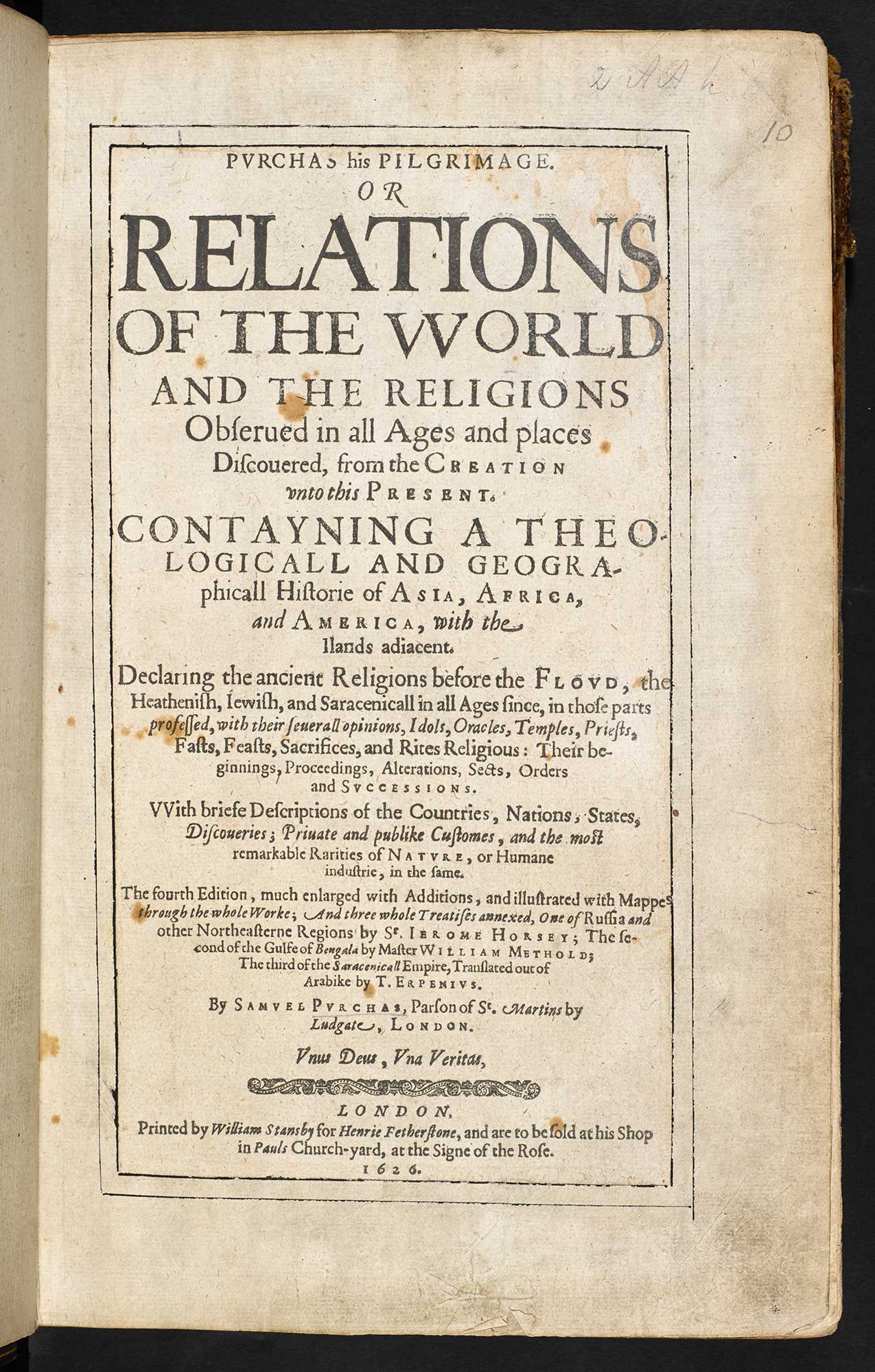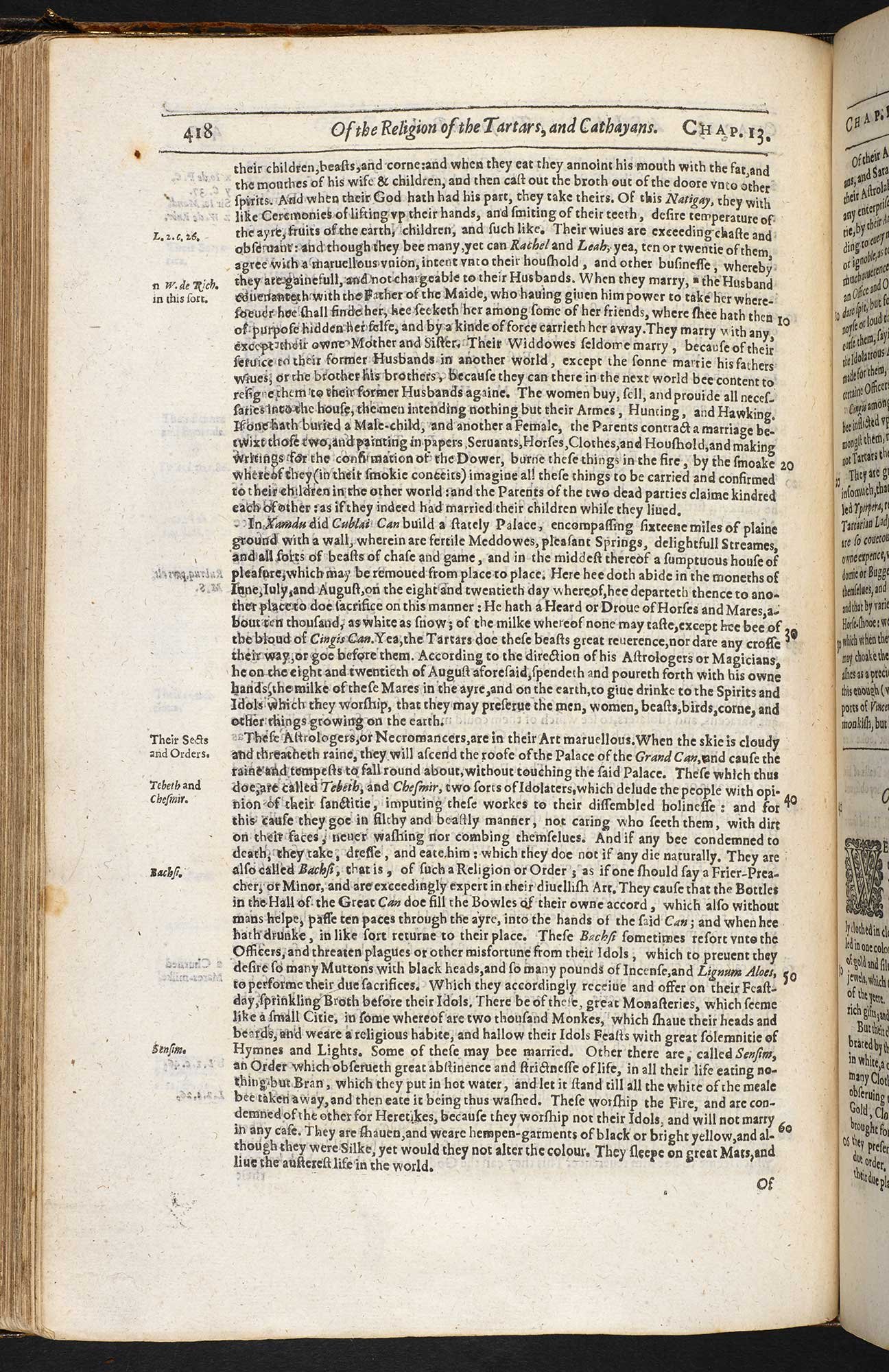Kubla Khan
[I had trouble copying the formatting from the website, but it is close now. Sometimes lines are separated more than they should be, but mostly this version of the poem is accurate. I’m not sure how the poem means yet, but I thought the essay that went with the poem was interesting and worth reading. If I discover a different way the poem works, or a different way of thinking about the poem, I shall open a new page instead of continuing here. Thus far the poem is a delightful mystery. LES]
Or, a vision in a dream. A Fragment.
1.
In Xanadu did Kubla Khan
A stately pleasure-dome decree:
Where Alph, the sacred river, ran
Through caverns measureless to man
Down to a sunless sea.
So twice five miles of fertile ground
With walls and towers were girdled round;
And there were gardens bright with sinuous rills,
Where blossomed many an incense-bearing tree;
And here were forests ancient as the hills,
Enfolding sunny spots of greenery.
2.
But oh! that deep romantic chasm which slanted
Down the green hill athwart a cedarn cover!
A savage place! as holy and enchanted
As e’er beneath a waning moon was haunted
By woman wailing for her demon-lover!
And from this chasm, with ceaseless turmoil seething,
As if this earth in fast thick pants were breathing,
A mighty fountain momently was forced:
Amid whose swift half-intermitted burst
Huge fragments vaulted like rebounding hail,
Or chaffy grain beneath the thresher’s flail:
And mid these dancing rocks at once and ever
It flung up momently the sacred river.
Five miles meandering with a mazy motion
Through wood and dale the sacred river ran,
Then reached the caverns measureless to man,
And sank in tumult to a lifeless ocean;
And ’mid this tumult Kubla heard from far
Ancestral voices prophesying war!
The shadow of the dome of pleasure
Floated midway on the waves;
Where was heard the mingled measure
From the fountain and the caves.
It was a miracle of rare device,
A sunny pleasure-dome with caves of ice!
3.
A damsel with a dulcimer
In a vision once I saw:
It was an Abyssinian maid
And on her dulcimer she played,
Singing of Mount Abora.
Could I revive within me
Her symphony and song,
To such a deep delight ’twould win me,
That with music loud and long,
I would build that dome in air,
That sunny dome! those caves of ice!
And all who heard should see them there,
And all should cry, Beware! Beware!
His flashing eyes, his floating hair!
Weave a circle round him thrice,
And close your eyes with holy dread
For he on honey-dew hath fed,
And drunk the milk of Paradise.
An introduction to Kubla Khan: or A Vision in a Dream
Article written by:Seamus PerryTheme:RomanticismPublished:15 May 2014
Dr Seamus Perry considers the composition and publication history of Kubla Khan, and explores how Coleridge transforms language into both image and music.
Coleridge’s famous and mysterious poem was written, probably, in the autumn of 1797. According to a note written at the bottom of the one manuscript that survives (it is in the British Library) Coleridge was taken ill at a farmhouse, presumably while out walking; and he took some opium to quell the pain. Opium has an exotic or transgressive tang to a modern reader, but it was the pain-killer freely available in Coleridge’s day: he didn’t take the drug to provoke a dream vision, but that (so he claims) is what happened, ‘in a sort of Reverie’.
The pleasure dome
What did he see? The short answer is, to begin with, an extraordinary piece of architecture, ‘A stately pleasure-dome’ (l. 2), which was built in the Mongolian summer capital by one of the great Emperors of ancient Tartary, Kubla, the grandson of Genghis Khan; but Coleridge’s interest does not seem especially drawn by the cruel despotism that would probably have been his reader’s first association. Coleridge’s Khan is a kind of artist, summoning into being with a God-like command not only the beauty of the pleasure-dome but the ordered loveliness of its cultivated gardens, full of sweet smells and tinkling streams, all sheltered from the outside world by robust ‘walls and towers’ (l. 7).
The natural history of Xanadu
The second verse then turns to picture that outside world, which it places in stark antithesis to the pleasures of the garden: ‘But oh!’ Outside, nature is exuberant, tumultuous, violent, ‘savage’, full of erotic feeling (‘woman wailing for her demon-lover’), and punctuated chiefly by exclamation marks (l. 12; l. 14; l. 16). The energy of the scene is superbly conveyed through breathless, on-running sentences, and the verse comes to a close with a vivid sense of that energy’s potential for destruction: ‘And ’mid this tumult Kubla heard from far / Ancestral voices prophesying war!’ (ll. 29–30). We learn no more about the character of this strange family curse, if that is what it is; but the mention is enough to cast some doubt on the survival of the pleasure-dome, a magnificent creation which now feels perhaps somewhat over-shadowed by the unruly splendour of the sublime scenery that surrounds it.
A miracle of rare device’
At this point Coleridge pulls off one of the great surprises of the poem: having set before us two antithetical territories of the imagination, he now finds a way of blending them together, as though a fuller kind of creativity should partake of both. The blending happens, not in the objective world, but within an act of consciousness: we are to imagine someone standing by the river, seeing the dome’s ‘shadow’ (which can mean ‘reflection’ at this period) on the water, and at the same time listening (‘Where was heard’) to the sound of the mighty fountain, which is its source, and the noise of the dark underground caverns into which it crashes (l. 31; l. 33). The opposing ingredients of the poem are brought together in ‘a miracle of rare device’ (‘device’ meaning ‘devising’, ‘inventing’): this act of artistry feels like it surpasses even what the mighty Khan had managed in the first verse (l. 35). Many years later Coleridge would describe how the imagination reveals ‘itself in the balance or reconciliation of opposite or discordant qualities’[1], a view which his early poem seems to anticipate in more intuitively sensory terms.
A damsel with a dulcimer
But then the poem makes its second surprising turn: when it felt like it had done its dialectical business, miraculously synthesising opposites into reconciliation, it changes tack with an almost comic abruptness, introducing the ‘I’ of the poet for the first time. He imagines an enigmatic ‘damsel’, playing on a musical instrument, and singing about ‘Mount Abora’ or, as Coleridge originally had it, ‘Mount Amara’ (l. 37; l. 41). Like the poem at large, this is as much a lovely piece of word music as it is a gesture to a real geography; but it carries meaning too: Mount Amara was one of the candidates for the site of Paradise that Milton mentions in Paradise Lost (Book 4, l. 283); and the thought of Eden, once set loose in the poem, now casts its retrospective influence on our sense of the fragility of Kubla’s walled garden. The damsel is a figure of poetic inspiration, but her powers are evoked here only to be felt missing: were she to sing, the poet would then be able to recreate the dome and its landscape; but the conditional mood of the lines (‘Could I …’, ‘I would …’) conveys this to be a wish rather than any realised achievement (l. 42; l. 46). The troubled reception his possible act of creation would gain is very striking, and suggests one last bursting out of the disruptive energies which the poem, like the Khan, has struggled to restrain: the hypothetical audience treats the inspired poet as a danger, best kept within the safety zone of the woven circle.
So, Coleridge ends his poem on an unexpectedly ambiguous note, with the triumphant act of creativity that we might reasonably have thought we had just witnessed turning out to be deferred to another day and more propitious circumstances. Coleridge’s attitude towards his ‘Kubla Khan’ is correspondingly hard to pin down. He did not print the poem for years, and when finally he did publish it, in 1816, he added a preface which described it as a mere ‘psychological curiosity’ and told an elaborate story about its composition. The poem, he says, was inspired by a sentence from the Renaissance historian Samuel Purchas: ‘Here the Khan Kubla commanded a palace to be built, and a stately garden thereunto. And thus ten miles of fertile ground were inclosed with a wall’. (What Purchas actually wrote was closer to the poem: ‘In Xamdu did Cublai Can build a stately palace, encompassing sixteene Miles of Plaine ground with a wall …’.) The poem arises magically unbidden in Coleridge’s sleep (‘all the images rose up before him as things’); and upon waking he begins to transcribe what his inward eye had seen – at which point he is interrupted by a tenacious ‘person on business from Porlock’ who detains him so long that when he gets back to his desk he has forgotten the rest. It is a great piece of mythmaking, and in its funny and rueful way, it rehearses the note of incomplete creativity that the poem will generate much more charismatically. But is the poem itself really unfinished? It is hard to think of a poem that sounds more utterly completed when we arrive at its last lines (‘And drank the milk of Paradise’); but then, as the distinguished scholar John Beer once remarked, ‘One can continue a poem in the middle ... as well as at the end’.[2]
[A] work by Samuel Purchas (1625) was the source for Coleridge’s information about Xanadu, ‘Xamdu’ in Purchas’s text. The book describes the flora, fauna and architecture of the palace and its grounds.
Footnotes
[1] Samuel Taylor Coleridge, Biographia Literaria (1817), chapter 14.
[2] John Beer, Coleridge the Visionary (London: Chatto & Windus, 1959), p. 275.
Written bySeamus Perry
Seamus Perry is a Fellow of Balliol College and an Associate Professor in the English Faculty, University of Oxford. He is the author of books and articles about, among others, Coleridge, Wordsworth, Tennyson, Matthew Arnold, T S Eliot, and W H Auden.
The text in this article is available under the Creative Commons License.
[At line 24 in the second image, the page from the text, you can read the passage Coleridge used or borrowed from. Having worked through the poem myself, to be published later, I find Perry’s analysis compelling, for the most part, though I am not sure he is completely right about what is taking place in the poem. LES]


